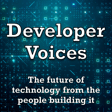
InfluxDB: The Evolution of a Time Series Database (with Paul Dix)
How hard is it to write a good database engine? Hard enough that sometimes it takes several versions to get it just right. Paul Dix joins us this week to talk about his journey building InfluxDB, and he's refreshingly frank about what went right, and what went wrong. Sometimes the real database is the knowledge you pick up along the way....
Paul walks us through InfluxDB's evolution from error logging system to time-series datasbase, and from Go to Rust, with unflinching honesty about the major lessons they learnt along the way. We cover technical details like Time-Structure Merge Trees, to business issues like what happens when your database works but your pricing model is broken.
If you're interested in how databases work, this is full of interesting details, and if you're interested in how projects evolve from good idea to functioning business, it's a treat.
--
Support Developer Voices on Patreon: https://patreon.com/DeveloperVoices
Support Developer Voices on YouTube: https://www.youtube.com/@developervoices/join
InfluxData: https://www.influxdata.com/
InfluxDB: https://www.influxdata.com/products/influxdb/
DataFusion: https://datafusion.apache.org/
DataFusion Episode: https://www.youtube.com/watch?v=8QNNCr8WfDM
Apache Arrow: https://arrow.apache.org/
Apache Parquet: https://parquet.apache.org/
BoltDB: https://github.com/boltdb/bolt
LevelDB: https://github.com/google/leveldb
RocksDB: https://rocksdb.org/
Gorilla: A Fast, Scalable, In-Memory Time Series Database (Facebook paper): https://www.vldb.org/pvldb/vol8/p1816-teller.pdf
Paul on LinkedIn: https://www.linkedin.com/in/pauldix/
Kris on Bluesky: https://bsky.app/profile/krisajenkins.bsky.social
Kris on Mastodon: http://mastodon.social/@krisajenkins
Kris on LinkedIn: https://www.linkedin.com/in/krisjenkins/
